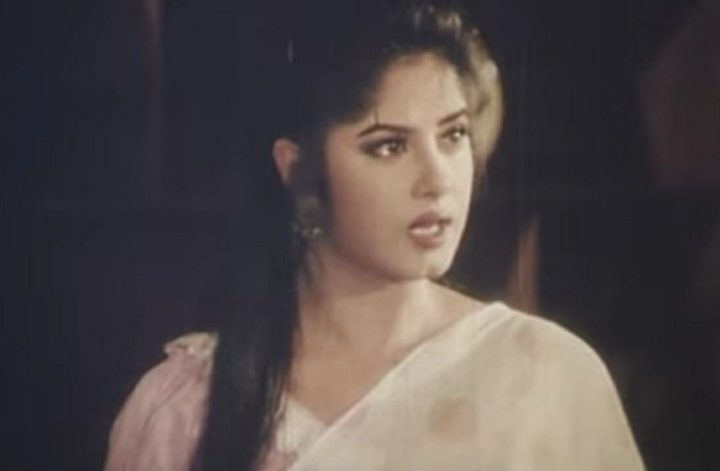By Mehreen Kabir
Written on: Aug 13, 2023
Last Updated: Aug 13, 2023
If you’re Bangladeshi, chances are you’ve seen at least one telefilm in your life — whether willingly or not. These telefilms, starring the same few actors and actresses and being uploaded for free on YouTube and tv channels, have exploded in popularity in recent years, with the popular ones gaining upwards of 40 million views. Some popular actresses donning the screen in telefilms include Mehazabien Chowdhury, Afran Nisho, Ziaul Faruq Apurba, Tanjin Tisha, Safa Kabir, Tawsif Mahbub, Bidya Sinha Saha Mim and Keya Payel. However, these telefilms often feel like they’re a bit… lacking in some aspects. But why is that so?
Everything Wrong with Most Telefilms
Disclaimer: This article intends to offer constructive criticism rather than insult or defame anyone involved in the production of the telefilms.
Cliché plot
Despite showing the male and female leads running into challenges during the relationship, the individual characters and relationships lack any complexity or depth to them. The plots also get neatly tied up by the end of the film, resulting in a similar ending to all telefilms regardless of what happens in the middle.
For example, in Hishebi Bou, the male protagonist spends all of his family’s savings on a business venture, despite his wife advising against it. He then gets a call saying that his mother may have had a heart attack and there is an immediate need for money to pay for the treatment bills. The wife offers to pay for the bill using her saved-up money. The film could have ended there, serving as a lesson for the husband. But right at the end, it is revealed that the mother did not have a heart attack at all, and it was simply a false alarm. Adding the last part makes the ending almost too perfect, making the story sound childish.
Repetitive Storyline
Almost all telefilms go something like this: The male lead has a misguided personality, he gets into a relationship with the female lead, they run into relationship problems, the female lead changes the male lead for the better, and they all live happily ever after.
Or, they go like this: The male lead comes across the female lead and instantly falls in love with her, the female lead is extremely rude to the male lead, the male lead constantly chases after her regardless, they eventually come to an understanding and the toxic relationship turns into a healthy one overnight. This is arguably much worse than the previous plot mentioned, as the storyline is even more unrealistic.
Or, they go like this: Both the leads are convinced into getting an arranged marriage, they’re against it at first, they go on a date together and slowly fall in love with each other.
Cringe Dialogue and Acting
The dialogues are set up like a school play rather than a film. Just like the characters’ personalities, they barely contain any complexity. Many of the dialogues go longer than necessary, and often accompanying the dialogue is a criminally overused soundtrack throughout the film. The acting is also sometimes overdone and does not seem realistic. Many telefilms actually do this in an ironic way, but that does not take away from the fact that it ruins the viewing experience for most people.
The man-child in “Porir Moto Bou”
Inability to Convey the Main Point
And that brings us to the next point, which is that many telefilms try to challenge societal issues such as sexism. However, they spend way too much time showing the issues themselves without challenging them in any way. It is only towards the last ten minutes that one of the characters decides to speak up about the issue. This creates an unpleasant and rather cringe viewing experience for most of the run time, causing a lot of people to simply click off and watch something else without even realizing that the first half was supposed to be ironic.
The Redemption Factor
However, many telefilms these days are trying to improve on the problems mentioned. One of the major directors in the telefilm industry is Vicky Zahed, who takes on a unique approach with each of his telefilms. Not only are the plotlines, often focusing on crime thrillers, mystery and horror, much less predictable, but the overall production quality is also always a step above the rest of the telefilms out there.
Vicky Zahed’s best and most popular work to date is Punorjonmo (“Rebirth”), a series consisting of three one-hour episodes, and one two-hour episode. The series has constant plot twists and each character is fleshed out with their individual intentions all intertwining to form the complex storyline. Everything from the colour-grading, dialogue and pace of the scenes is well thought-out and executed exceptionally well. We’ll refrain from giving any spoilers since it will take too long to explain, and we suggest you give it a watch yourself (It has English subtitles too!).
A scene in “Punorjonmo”
However, Vicky Zahed is not the only person creating good telefilms. Another director worth mentioning is Mahmudur Rahman Hime. He is the creator of Boro Chele (“The Eldest Son”), which, having amassed over 45 million views, is one of the most popular telefilms in Bangladesh to date. Unlike most other films, his telefilms are always realistic and do not push any stereotypes. His stories involve things such as middle class struggles, societal issues and struggling relationships. Where most telefilms show couples always ending up together in the end, the male lead in Boro Chele could not get married to the female lead due to being unemployed. In the end, she ends up being married off to a wealthier man. And where most telefilms show divorced couples getting back together, I Am Divorced shows a divorced woman struggling to beat societal stigma surrounding divorce.
Unlike Punorjonmo, the film is shot in a very simple manner, with no unique camera work and lighting. However, given the realistic storyline, perhaps a simple production style was the most fitting.
A Reflection of Bangladeshi Society?
The telefilms also tend to promote the ever-popular South Asian narrative that pushes marriage as a solution to virtually any problem. Marriage is seen as one of the most important achievements in South Asian culture due to its collectivist nature. Married individuals generally hold a higher status in society and are considered more mature compared to their single counterparts.[1] This can be seen in the telefilms as well, where at least one of the main characters, especially the male lead, goes through a character transformation during the relationship. Whenever the films deal with issues such as divorce, the decision to divorce is almost always shown as an immature one. And surprise, the partners always get back together at the end.
It goes without saying that can be an extremely damaging mindset. Relationships are a lot more complex in real life and partners are not always able to solve each other’s issues. Getting married as a way to solve one’s behavioural issues often leads to dysfunctional relationships and puts a greater amount of burden on their significant other. And while it is true that divorce should only be used as a last resort, there are countless valid reasons for wanting a divorce. Treating divorce like an immature phase does nothing but harm real people going through divorces.
The society of Bangladesh is constantly changing and challenging old ideals, and that can be seen in the storylines as well. However, as mentioned earlier, few telefilms can convey that point properly.
These telefilms provide a relatable source of free entertainment for casual viewing, allowing themselves to continue to put out mediocre content. However, a few production changes would truly go a long way toward pushing the film industry further as a whole.
Sources
[1] Ternikar, Farha. “To Arrange or Not: Marriage Trends in the South Asian American Community.” VCU Scholars Compass, scholarscompass.vcu.edu/esr/vol31/iss2/10/. Accessed 10 Aug. 2023.
Telefilms used as reference:
- Hishebi Bou
- Aporupa
- Bou Prem Bojhena
- Porir Moto Bou
- Chompa House
- Punjorjonmo 1
- Punorjonmo 2
- Punorjonmo 3
- Punorjonmo Antim Porbo (Last episode)
- Boro Chele
- Boyesh Kono Bepar Na
- I Am Divorced
- Hello Baby
- 90 Days



